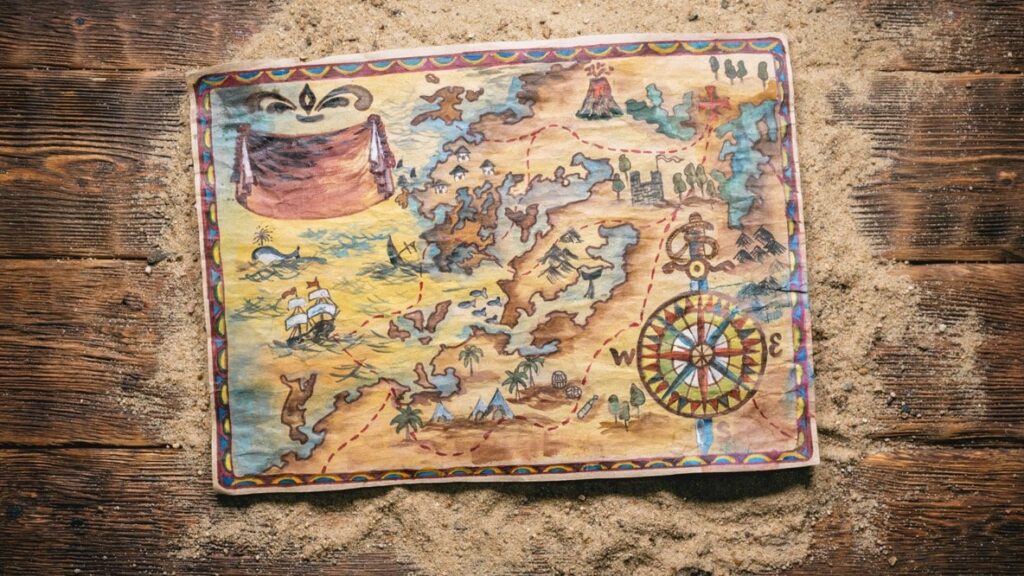Smartphones have taken the world by storm. Pretty much everyone you know these days has a phone, which is a very practical device in our daily life. In the gaming world, they were once a spark that showed promise – and, years later, they delivered!
According to Admob, 62% of smartphone users install games within the first week of buying their phone. In addition, a recent report by Adjust states that mobile represents more than half of the entire gaming market share, and there are no signs this rise will halt any time soon.
With mobile games being ever more complex, engaging and interactive (sometimes with the real world, like Pokémon GO!) and the recent democratization of the smartphone, seeing it dominate the gaming market should be a surprise to no one.
Knowing this, it’s not hard to imagine that people would love to be a part of it and cash in some money while at it. As the gaming market grows, so does the number of aspiring game developers, who often wonder how to develop a mobile game – or for any other platform, really.
However, it’s true that developing games is a complex and time-consuming task, often taking weeks or even months for simple games to be built from scratch.
In this post, we will talk you through the 8 fundamental steps taken by seasoned game developers to create superb experiences, giving you an overview from the pre-production stage all the way to monetization methods.
Without further ado, let’s get started!
8 key steps to develop a mobile game
1. Brainstorm ideas and concepts
Ideas are the foundation of any game, but you don’t need to reinvent the wheel! Sometimes, starting with a simple, tried and tested concept and adding a touch of your own as you go is the way to go.
That said, don’t be afraid to go for a unique game concept or to take inspiration from successful existing ones. As long as the game’s experience is engaging, you will be golden.
2. Make a detailed game plan
Having a rock-solid game plan is extremely important. So much so that creating a Game Design Document (GDD) will serve as the reference point down the line and help get everyone on the same page.
In said document, game designers usually include an executive summary of the game (a brief rundown on the game’s concept, target audience and project scope), what the setting, gameplay and challenges/objectives are, which in-game mechanics it will include, a brief description on the game’s art style/concept art, monetization/marketing methods and a detailed description of many game elements (lore, worldbuilding, characters, level design, …).
There is no need to settle everything down just yet – it’s often said that the GDD gets outdated really fast. To be fair, it’s true, but it doesn’t mean it can’t evolve as so does the project. Make sure to ALWAYS keep it up to date so it can serve as the reference point for you or your team at any time.

3. Choose your mobile platform
You need to know whether you’re developing for Android or iOS… or both. As a matter of fact, Android has maintained its position as the most popular mobile operating system with around 70% of the smartphone users. On the other hand, iOS accounted for around 28% of the mobile market.
It’s possible to develop for both platforms at the same time, but, for that, you need to have a reasonable budget. Otherwise, stick to your platform of preference.
4. Choose your game engine and start your mobile game development
There is a multitude of game engines on the mobile game development market, which makes it a tough decision. However, as happens with desktop and console games, the main engines used for mobile development are Unity (Pokémon Go), Unreal Engine (Fortnite) and Godot (Disco Dungeon), with honorable mention to Phaser (Idle Zoo) and Solar2D (Flappy Bird).
They each have different features, programming languages and pricing (or lack thereof in the case of Godot, with is 100% free for all purposes), so you will have to do a bit of research yourself to decide which one will work best for your game.
What we can say for sure though is that Unity is one of the best game engines to learn if you’re just starting out, and they will charge you nothing until your mobile game has generated over $100,000 in revenue If you want in-depth information about Unity’s many licenses, make sure to read our other post.
5. Create aesthetically pleasing assets for your mobile game
This is where your game will be for the longest. Creating assets is indeed a time-consuming task – and it’s usually also the most expensive step in the process – as it encompasses everything from the audio to the visuals.
For graphics, you can create amazing art with Adobe Photoshop or GIMP (for 2D graphics). If you’re looking to build a 3D game instead, then check Blender, Maya and ZBrush instead. Or, alternatively, check Aseprite out if you’re going for that retro feel in your mobile game.
As far as audio, voice lines and music go, look no further than Audacity and FL Studio.
Don’t be afraid to hire or outsource artists for this task as visuals do matter – around 3 in 4 players are more likely to check your game out if it has pretty graphics.
6. QA testing: make playable prototypes for your mobile game
Quality Assurance (QA) is one of the most important steps when it comes to game development process. They are the professionals who will test your game and, in case they find any bugs/crashes, write detailed logs and steps to reproduce the error, which you will want to fix as soon as possible.
While you’re at it, make sure to experiment with different UI designs and see which one will work better for your players. And don’t forget to test the mobile game itself to see if it’s in accordance with the GDD and confirm its gameplay is as fun and engaging as possible.
Some developers will also introduce an alpha or beta test for their mobile games, which allows them to collect information on how the game runs on different devices, allowing developers to fix any potential bug/exploit that might have passed by the QA professionals.
7. Choose your mobile game’s monetization method
You need to ask yourself “how will my mobile game generate income?”
There are many monetization methods in the gaming world, but free mobile games often use in-app purchases (IAPs) with small banner ads somewhere in the screen. Some games opt to go the paid route while others work on a monthly subscription model.
In the end, it’s up to you to decide which monetization method(s) will work best for your game and your audience.
Oh, and NEVER put ads on paid mobile games!
8. Release your mobile game!
While launching a mobile game in an unpolished state might be bad, newer game developers often make the mistake of trying to make everything perfect, often delaying the game’s release by weeks or even months on end.
Bugs, as long as they are not game-breaking, can always be fixed in later updates and, more often than not, it’s better to get your mobile game out of the door as soon as possible.
If you are serious about making a living out of developing mobile games, then you might need to throw money into marketing and publicity. They are never cheap, but might give you massive returns in the long run.

Mobile game development process: Summing up
Making a mobile game app is an exciting milestone, but it doesn’t happen overnight. Before you can release your game, you need to brainstorm ideas and create a detailed game plan. You should also make playable prototypes for your mobile game and develop aesthetically pleasing assets.
Additionally, you should decide on the best monetization method for your game and determine which mobile platform and game engine to use. By taking the time to focus on every one of these aspects, you can ensure that everything is set up correctly before you release your mobile game.
We can develop your mobile game for you!
If the process seems too complex or you want to get the best quality game for your investment, then look no further!
We are Main Leaf, a game development studio that has been in the industry for over a decade. We create fantastic games with excellence on demand for our clients and, with over 70 professionals spanning the entire development process, we would be pleased to do the same for you.
If you got interested, head to the top of this page and request a game quote today. We’ll get back to you as soon as we can!

